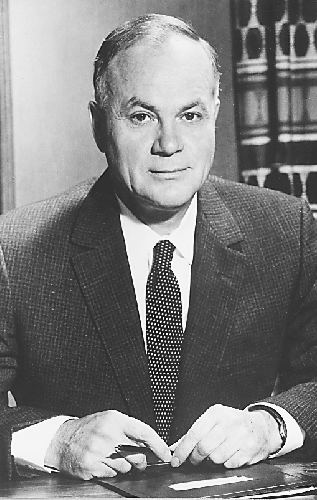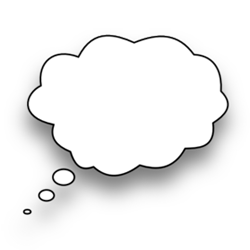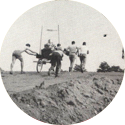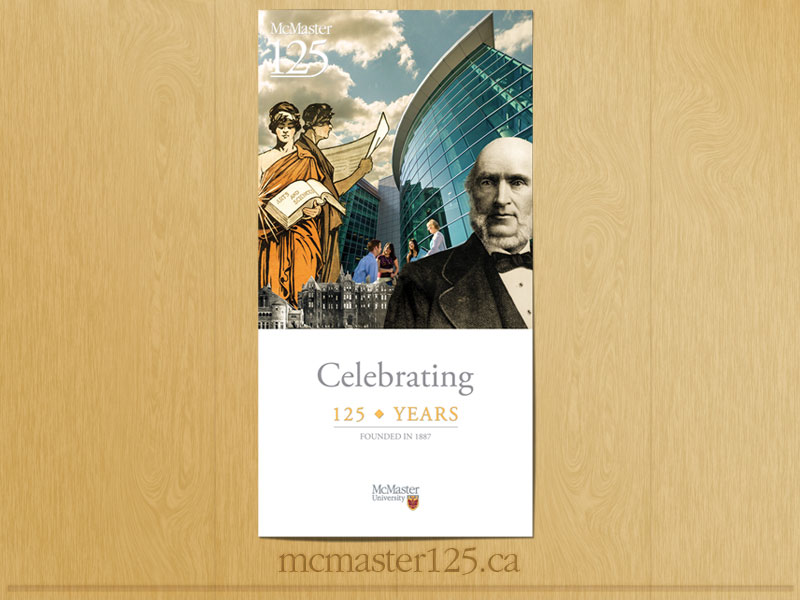Harry Thode

McMaster President Elevates Science
By Dr. Martin Johns, ’32.
…Harry Thode was chosen by Dean Charles Burke as one of the instruments which were to be used to create a McMaster that would serve the industrial and technological needs of the Golden Horseshoe. It turned out that the special training he had received at Chicago and at Columbia University uniquely fitted him for a key role in Canada’s embryonic nuclear power industry, and his response to that national challenge changed the fact of the University to which he has given his life.
Soon after the United States entered World War II, a group of eminent refugee scientists, including Einstein were able to get the ear of president Franklin Roosevelt, and warn him of the keen interest Germany was showing in developing the new discovery of nuclear fission into a nuclear weapon. Roosevelt responded by creating the Manhattan Project, the code name for an organization which included over 100,000 scientists, engineers, and technical staff in research which led to the Hiroshima bomb some 3 ½ years later.
In the summer of 1942, Harry was asked to come to the USA, and to become involved in important research for the allied war effort. The very next day he was contacted by C. J. McKenzie, the president of Canada’s National Research Council, who asked him to get involved in a Canadian research project of vital importance to Canada’s war effort. Harry saw both Canadian and American contacts, and decided to join the Montreal Lab, as it was soon to be known.
Canada’s fission research was sparked initially by a group of refugee physicists and chemists from France and Germany who were not acceptable as security risks to the Americans, and were thus barred from joining the Manhattan Project. Right from the beginning, the Canadian effort was directed toward the development of nuclear power, since it was clear that the parallel and more urgent development of a nuclear weapon was to be the main focus of the Manhattan Project. It was not clear in 1942 that either development would be possible, and the first task was to do the basic research which was common to both and without which neither could succeed.
Harry began working in Montreal in September, 1942. By January, the group had a laboratory in the new science building of the University of Montreal, and extreme pressure was being placed on Harry to move permanently to Montreal. At that time, he already had at McMaster a functioning mass spectrometer, the only one in Canada. Harry pointed out it would take about a year to get the instrument into operation at Montreal, whereas if he were allowed to do his work at McMaster, results from his instrument could be available within weeks. This argument convinced the scientists that he should stay at McMaster, but it required a long battle with “security” before a compromise was reached: Harry was to be allowed to continue to work at McMaster until a new mass spectrometer could be finished in Montreal, and then he would have to move there. (Of course, other pressing demands interfered, and the new machine desired by “security” never did get built; the McMaster operation flourished.)
Part of the deal was the requirement that all people on the McMaster project should be cleared by the RCMP, and that the laboratory on the top floor of Hamilton Hall should be barred to all but “cleared” personnel. But not all of the work that went into this research programme was “classified,” and not all of the staff and students, therefore were “cleared.” This situation led to the placement of the secretary’s desk in the oriel window directly above the sundial on the south side of Hamilton Hall. There she could keep an eye out for the RCMP. When she announced over the PA systems “the police are approaching,” everyone scurried to the proper desk, and “security” was satisfied.
These were very exciting times, and everyone, including Harry, worked from 9 a.m. till midnight! Harry himself seemed to have no need to rest, or even time to eat. I well recall how, in the summer of 1946, I suffered from hunger pains as Harry and I would continue working far into the afternoon without a lunch break. By 3 p.m., my stomach would be objecting so vigorously that it was hard for me to concentrate on physics. Matters were not helped when Harry would notice the time, casually remark that it was about time to think of lunch, and then get caught up in some new aspect of work for another hour or so!
Occasionally, human sacrifice of another order was called for. One of the most impressive pieces of equipment in the laboratory was the diffusion column, a complex array of glass tubing which extended the full four stories of Hamilton Hall through the light shaft which Dr. Henry Dawes had built to bring sunlight from the roof to the optics laboratory in the basement. Harry, who was a consummate glass blower, had built this column from three-foot lengths of Pyrex tubing. These had to be fused with a blow torch by the glass blower, who had to perch precariously on a ladder. Harry needed the assistance of a student to stand on the same ladder, a couple of rungs lower down, and hold a meeker burner over his head with the flame directed on the joint on which Harry was working. Among the group was Ruven Smith, ’42, a young man who was absolutely bald. One day, as Ruven was perched below Harry, a droplet of molten glass fell directly onto his head. All Ruven could do was to freeze in pain on his perch, while the perfume of the human sacrifice to the goddess of science was wafted heavenward.
The security wall between the Canadian and American efforts was always very high, since the Canadian project involved people whom the FBI did not consider good security risks. When the Canadian atomic energy project required a deuterium mass spectrometer, Harry obtained permission to visit the metallurgical laboratory in Chicago to talk to Dempster, his old professor. The conversation was held in the presence of an American army captain who was there to see that the scientists did not talk about forbidden matters. After a full morning of technical discussions, during which the captain dozed in his chair, and following lunch, Dempster had to leave for a meeting. He left Harry to work under the captain’s oversight on the blueprints of the instrument he was to build.
A few hours later, the captain made the mistake of allowing Harry to go out for a coffee, for when he emerged from Dempster’s office, who should be there but his old friend Bob Moon. This would have been no problem had not Moon assumed that anyone who came out of Dempster’s office was “cleared” for all the Manhattan Project secrets. In the next half hour, Harry found out all sorts of things that had not been revealed to the Canadian effort, including crucial information that saved the Canadian group months of time.
Of great importance to McMaster was the fact that this visit to Chicago made Harry realize that he had available at McMaster the equipment to determine the fission yield curve. But this would require samples of fission products Krypton and Xexon. It took many months of persuasion before anyone in the Montreal laboratory would allow heir precious uranium samples from the first American reactor to be used in Hamilton. However, the results of the measurement, when the samples finally came, gave a lot of status to the Canadian effort, and placed McMaster firmly on the world’s scientific map.
As new staff were brought to the University in the late ‘40s and early ‘50s, a diverse range of nuclear research activities appeared in physics, chemistry, biology and engineering, and it became essential to nourish these diverse programmes if the momentum of the war years was to be maintained. While I believe the reactor was the first brain child of Howard Petch, ’49, Harry soon became convinced that a high–flux nuclear reactor was the best instrument for McMaster at the time, and aggressively pushed the concept within the University, at the National Research Council, and with Ontario Hydro. All these co–operated in producing the $2 million to make the McMaster reactor a reality. The arrival of the reactor in 1959 gave McMaster a visible place in the world scene, and attracted to the University scientists from every part of the world! It would not have been possible without Harry’s commitment, since he was the only scientist at McMaster at that time with the prestige to win for one of Canada’s smaller universities the largest grant that the National Research Council had ever made to a university up to that time.
As Harry’s responsibilities broadened, so did his dream for the University. As president, he became conscious of the need to provide a catalyst for research in the humanities and social sciences that would do for them what the reactor had done for science. It was this enlarged vision that led him to seize on the opportunity to acquire the Bertrand Russell Archives, and to outbid the determined efforts of several American centres of scholarship. To Harry this collection was the arts–man’s reactor, a half–million dollars well spent to provide a focus for scholarship in history, philosophy and related fields, and to provide the nucleus which would attract other collections and a growing number of international scholars throughout the years ahead.
Harry had a style of decision–making which often confused those who did not know him well. He treated each problem as a scientific exercise, arguing the pros and cons of each case with equal vehemence. This open process offered very few clues as to the way that the final decision would go, and petitioners to the president’s office who did not understand that they were being exposed to a process, rather than a decision, often came away completely frustrated. In fact, the decision was eventually made, and when made was held to and acted upon with great determination.
I found that I had a much better chance of discovering Harry’s mind on a subject when he was at ease in his beloved Nuclear Research Building than when I was meeting him upon appointment in the president’s office. In fact, my best visits with him occurred almost by accident on Sunday mornings when we were alone in the nuclear building. I came to realize that if I left my office door ajar, Harry would eventually wander down the hall and come in. Our conversation would always start with research, his and mine, but would eventually move to issues affecting the whole University.
I believe that he did most of his creative thinking for the University while surrounded by the scientific equipment which he had himself designed and which he used with such skill. I suspect that he was the only university president in Canada who operated this way.





